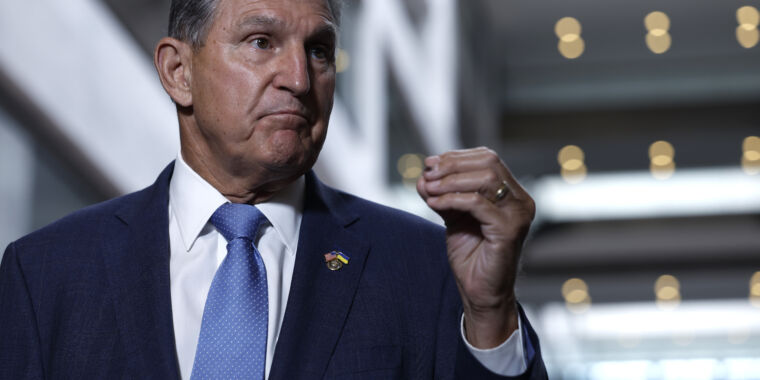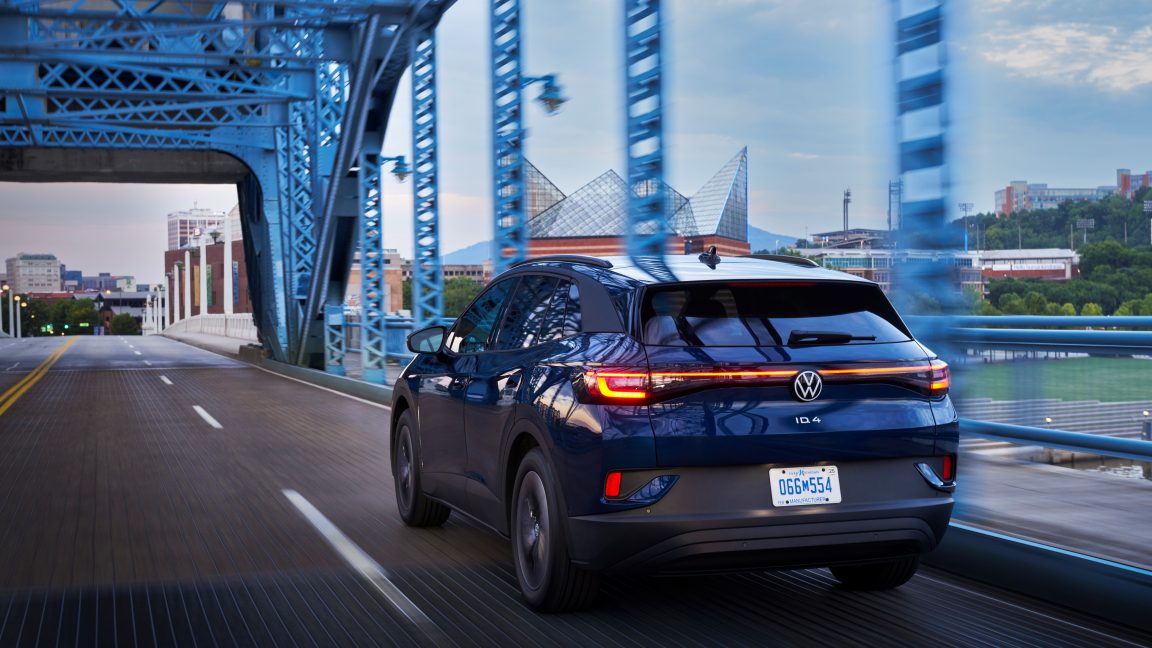They do in Europe. I use Tesla chargers when I fast charge because they are much better than everything else.Supposedly Tesla network will support CCS soon.
You are using an out of date browser. It may not display this or other websites correctly.
You should upgrade or use an alternative browser.
You should upgrade or use an alternative browser.
Electric Vehicle Thread!
- Thread starter Grall
- Start date
If only Elon Musk didn't own Tesla this would be a far easier conversation -- at least for my own feelings on the matter. Jeez that guy is a disaster.
Yes, as an owner of Tesla stock, Musk's public persona has gone from a positive to a negative.
Yes, as an owner of Tesla stock, Musk's public persona has gone from a positive to a negative.
We need Elon Tusk
So the reconciliation deal brings back the EV tax credit but mainly for EVs assembled in the US with mostly US sourced or made batteries.
Remember that earlier versions of the bill would offer up to $12,500 tax credit for cars made by US manufacturers using American union workers. Well they got rid of that but the requirements pretty much favor EVs made by unionized workers.
Here are the proposed provisions, basically requires batteries and components coming from the US or countries which have free trade agreements with the US.
It would be applied at the point of sale, not in tax filing time and would have specific income requirements for the buyers as well as price of the vehicle -- forget about high end Teslas or Mercedes EVs.
There will also be a used EV credit which may apply to some used EV sales.

 electrek.co
electrek.co
The used EV credit, how many used EVs are under $25k? And only buying from dealer means the dealer can boost the price knowing he can dangle the credit to prospective buyers. So maybe not that useful.
Remember that earlier versions of the bill would offer up to $12,500 tax credit for cars made by US manufacturers using American union workers. Well they got rid of that but the requirements pretty much favor EVs made by unionized workers.
Here are the proposed provisions, basically requires batteries and components coming from the US or countries which have free trade agreements with the US.
It would be applied at the point of sale, not in tax filing time and would have specific income requirements for the buyers as well as price of the vehicle -- forget about high end Teslas or Mercedes EVs.
There will also be a used EV credit which may apply to some used EV sales.
New Vehicle Credit
1. Manufacturer caps eliminated. (Page 370, line 15)
2. Credit applies for vehicles purchased beginning January 1, 2023. (Page 386, line 1).
2. Transition provision for EVs with written sales orders dated in 2022 prior to the date of President signing the bill but delivered in 2023 allows purchaser to claim the “old” credit in 2023. (Page 386, line 20).
3. Vehicle must be assembled in North America to qualify for new credit. (Page 366, line 15).
4. North American assembly requirement applies to vehicles sold after the date of adoption of the bill. (Page 386, line 3)
5/ $7,500 credit is broke into two binary pieces meaning the vehicle either qualifies for each piece of the credit or it doesn’t. No longer based on size of battery. (Page 366, line 6)
6. $3,750 of the new credit is based upon the vehicle having at least 40% of its battery critical minerals from the United States or countries with a free trade agreement with the United States. This is a list of countries with free trade agreements with the US.(Page 371)
7. The other $3,750 of the new credit is based on at least 50% of the battery components of the vehicle coming from the United States or countries with a free trade agreement with the US. (Page 372, line 13)
8. The 40% minerals requirement increases to 50% in 2024, 60% in 2025, 70% in 2026 and 80% in 2027. (page 371 line 23)
9. The 50% battery components requirement increases to 60% in 2024, 70% in 2026, 80% in 2027, 90% in 2028 and 100% in 2029. (Page line 373)
10. The government has until the end of the year to develop guidance on the battery requirements. (Page 374)
11. Beginning in 2025, any vehicle with battery minerals or components from a foreign entity of concern are excluded from the tax credit. (Page 374, line 20).
12. One credit per vehicle. (Page 375, line 12)
13. Modified gross income limit of $150k for individuals, $225k for head of household, and $300k for joint returns. Definition of MAGI (page 375, line 22)
14. MSRP of vehicle must be $80k or less for SUVs, Vans and Trucks. $55k for all other vehicles. (Page 377, line 4)
15. Dealer can apply credit at time of sale. Dealer must disclose to buyer the MSRP of the vehicle, the applicable tax credit amount and the amount of any other available incentive applicable to the purchase. (Page 378, line 6)
16. Credit terminates December 31, 2032.
Used Vehicle Credit
1. Tax credit of 30% of value of used EV with $4,000 cap (Page 387, line 23).
2. Used vehicle must be at least two model years old at time of sale. (Page 389, line 7).
3. The original use of the vehicle must have occurred with an individual other than the one claiming the used tax credit. (Page 389, line 10).
4. Used vehicle must be purchased from a dealer. (Page 390, line 3).
5. Used vehicle price must be $25k or less. (Page 390, line 5).
6. Used vehicle qualifies for tax credit only once in its lifetime. (Page 390, line 7)
7. Purchaser must be an individual (no businesses) to qualify for used credit. (Page 390, line 14).
8. Purchaser may only claim one used vehicle credit per three years. (Page 390, line 20).
9. Modified gross income cap of $75k for individuals, $112,500 for head of household and $150k for joint returns. (Page 388).
10. Credit may be applied at time of sale by dealer. (Page 391, line 15).
11. Credit terminates on December 31, 2032. (Page 391, line 12).

Senate moves forward with EV tax credit reform; Tesla (TSLA) to be included back and more
The US Senate is going to move forward with a sweeping new bill after Senator Joe Manchin finally accepted to include investments to curb climate change. The new bill is going to include the long-awaited electric vehicle tax credit reform that is going to give back access to the tax credit to...
The used EV credit, how many used EVs are under $25k? And only buying from dealer means the dealer can boost the price knowing he can dangle the credit to prospective buyers. So maybe not that useful.
I think the change in the tax credit is a great thing. Lots of used EV's are under 25k. It is stupid to subsidize the rich to do what they are already doing. These changes do not clarify how the tax credit works though. If it is at the point of sale does the dealer claim it on their taxes? They can't know the tax burden of the buyer and how much they qualify for so something must have changed from the prior tax credit regime. Now Tesla and GM get the credit again of their vehicles meet the criteria which they will. Seems good to me. I might get the id4 if it meets criteria.
Man.... And in my country even Nissan leaf is around 50k usd
Could be that the dealer gives them the rebate when the sale occurs. However, the buyer when he files taxes may find he's over the income limit and owe part or all of the rebate/tax credit that he received when he purchased the car.I think the change in the tax credit is a great thing. Lots of used EV's are under 25k. It is stupid to subsidize the rich to do what they are already doing. These changes do not clarify how the tax credit works though. If it is at the point of sale does the dealer claim it on their taxes? They can't know the tax burden of the buyer and how much they qualify for so something must have changed from the prior tax credit regime. Now Tesla and GM get the credit again of their vehicles meet the criteria which they will. Seems good to me. I might get the id4 if it meets criteria.
ID.4 just started being manufactured in Chattanooga. However, it's not clear if it would qualify depending on where they source the battery and the contents.
It might rule out BMWs and Benzes, which are made in Europe. Plus they're probably over the price limits for most of the EVs they've introduced so far. The smart thing for them would be to make EVs in their US factories which fit under the price limits, to boost volume sales, while still making big profits on the $100k EVs they introduced first.
I knew they were making them in TN but I'm not sure if their battery stuff qualifies. SK makes their batteries now and they are making some in North East Georgia so they could qualify. I would want an awd version which precludes their cheaper smaller battery version unfortunately. I would really like something like the Mazda mpv in electric but no one wants to make that.
There's the phev Chrysler pacifica. Range on electric is 32 miles.I knew they were making them in TN but I'm not sure if their battery stuff qualifies. SK makes their batteries now and they are making some in North East Georgia so they could qualify. I would want an awd version which precludes their cheaper smaller battery version unfortunately. I would really like something like the Mazda mpv in electric but no one wants to make that.
Sadly by the time you ship it, pay duties and taxes it will be closer to $5000.00 and then you still can't drive it because they're not street legal.
If anyone does want one
Four-wheel Changli Electric Environmental Protection Car Small Electric Car Chang Li Zyx - Buy Electric Vehicle,Chang Li Electric Car,Cars Product on Alibaba.com
Four-wheel Changli Electric Environmental Protection Car Small Electric Car Chang Li Zyx - Buy Electric Vehicle,Chang Li Electric Car,Cars Product on Alibaba.com
cnruipaiying.en.alibaba.com
They'd also have to be made street legal in the US, which means things like bumpers, crumple zones, airbags, etc.Sadly by the time you ship it, pay duties and taxes it will be closer to $5000.00 and then you still can't drive it because they're not street legal.
Even then, there are probably not going to be many takers for these tiny vehicles, except maybe in the warm-weather areas where they drive golf carts in these big condo complex developments or maybe on some streets.
Companies have tried to sell smaller cars in the US, like the Smart car.
This is the land of SUVs so the market probably didn't like tiny cars esthetically, aside from safety concerns.
I don't want a PHEV given we are a two car household. Also Chrysler says they will make a minivan EV that keeps the stow and go seats etc that the Pacifica PHEV loses (plus it is fanciest and most expensive Pacifica). The mpv was smaller as well if I recall correctly. Model y had a third row option, but not many other smaller than minivan size EV's seem to have one now. I like the jump seat style third row instead of getting a huge vehicle we don't need for most trips. There are five of us so two rows is usually enough and we don't go together on all trips. I'm trying to replace a Subaru outback with an EV.There's the phev Chrysler pacifica. Range on electric is 32 miles.
Fit a gun rack - problem solved...there are probably not going to be many takers for these tiny vehicles,
As the Inflation Reduction Act of 2022 is currently written, no existing EV in the US market would qualify for the tax credit/rebate because of the battery content requirements, as well as the price caps.
Manchin is unapologetic, especially since he's expressed opposition to the EV tax credit in the past.

 arstechnica.com
arstechnica.com
Manchin is unapologetic, especially since he's expressed opposition to the EV tax credit in the past.
The union-made requirement is no more, but the EV's battery pack must be increasingly made in North America, with materials sourced or recycled from North America or countries that have a free-trade agreement with the US. Starting in 2024, 40 percent of a battery pack's materials would need to come from these sources, increasing to 80 percent by 2027. And at least 50 percent of the battery pack's components would have to be manufactured or assembled in North America in 2024, increasing to 100 percent by 2029.
If enacted, the bill would rule out battery packs made with Chinese cells or packs made with raw materials processed in China, which currently account for the vast majority of the lithium, cobalt, graphite, and nickel that goes into EV cells. Although US domestic battery production capacity is increasing, this bill would require wide-ranging changes to automaker supply chains as well.
As you might expect, many automakers are unhappy with the IRA's new tax credit. General Motors said that "some of the provisions are challenging and cannot be achieved overnight," and the startup Rivian said that the bill "will pull the rug out from consumers considering purchase of an American made electric vehicle."
But they may be wasting their breath. On Tuesday, Manchin seemed unwilling to consider tweaks to his plan. "Tell [automakers] to get aggressive and make sure that we're extracting in North America, we're processing in North America, and we put a line on China. I don't believe that we should be building a transportation mode on the backs of foreign supply chains. I'm not going to do it," he said.

Manchin rebuffs industry criticism of new EV tax credit
Price caps, income caps, and no Chinese batteries are the stumbling blocks.
VW starts ID.4 production in TN, cutting starting prices but those are packs with 25% less capacity and range.

 arstechnica.com
arstechnica.com
The new model is called the ID.4 Standard, and it keeps the same 201-hp (150-kW) electric motor driving the rear wheels as the ID.4 Pro or the ID.4 First Edition we tested in April 2021. But instead of that car's 82 kWh pack, the ID.4 Standard makes do with a 62 kWh pack (gross capacity—unfortunately, VW hasn't shared net capacity).
That cuts the EV's price by $5,000 compared to the ID.4 Pro, so the ID.4 Standard starts at $37,495 before the $7,500 federal tax credit or other incentives. But a smaller battery means a shorter range, of course, so the ID.4 Standard makes do with an EPA range estimate of 208 miles (335 km) compared to 275 miles (443 km) for the ID.4 Pro.

Volkswagen’s new US-made ID.4 starts at $37,495 with small battery
Chattanooga is now assembling the EV crossovers with 62 kWh or 82 kWh packs.
 arstechnica.com
arstechnica.com
For those who use their cars as around-town commuters, that's still plenty. My work commute, for those days when I actually go into the office, is 52 miles round-trip. That's still a ton of extra capacity for running errands before or after work, or for running around on the weekends when we typically do "big" shopping runs like the grocery, hardware or general store(s).
Similar threads
- Replies
- 9
- Views
- 3K
- Locked
- Replies
- 19
- Views
- 6K
- Replies
- 326
- Views
- 39K
